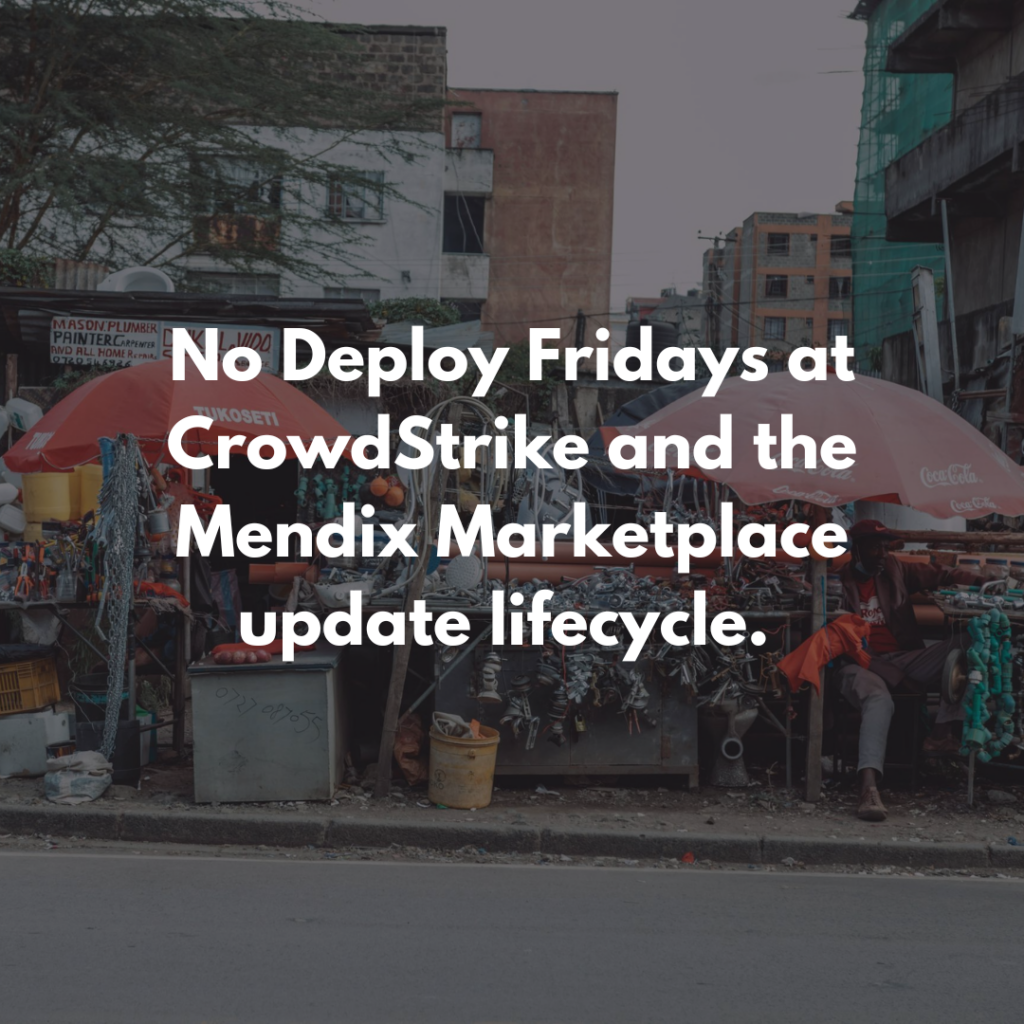A decade of Mendix: a trip down memory lane
Once upon a time, a brave young soul started his professional career…
And that was ten years ago (well, more like 11, but who’s counting). Ready for a little trip down memory lane, written from the perspective of Paul Ketelaars, a Mendix ‘veteran’ and one of the first generation of Mendix Most Valuable Professionals (Mendix MVPs)?

Where it all started
October 2012 marks the start of my professional career and safe to say I made the right call. A friend who I graduated with told me he got a job working with “Mendix, the app platform”. He told me more and it immediately resonated with me, as we had a class that had some similarities, and I loved it. I asked if he’d mind if I applied for the job as well, since they were looking for more than one hire, and the next month we both started our first job as a Mendix Consultant.
Mendix 4: No Code, Just Glory
That was in October of 2012, the year of Mendix 4. Training at that time consisted of the well-known ‘Pizza Mario’ case, in person training at Mendix’ office at the Westzeedijk in Rotterdam and a whole lot of trial and error. I joined at the right time as there was a big Mendix event showcasing the platform: ‘Mendix World’ (rings a bell doesn’t it?).
UX/UI Capabilities were very much in their infancy. One of the coolest things you could do is find a matching glyph-icon to liven up your microflow button!
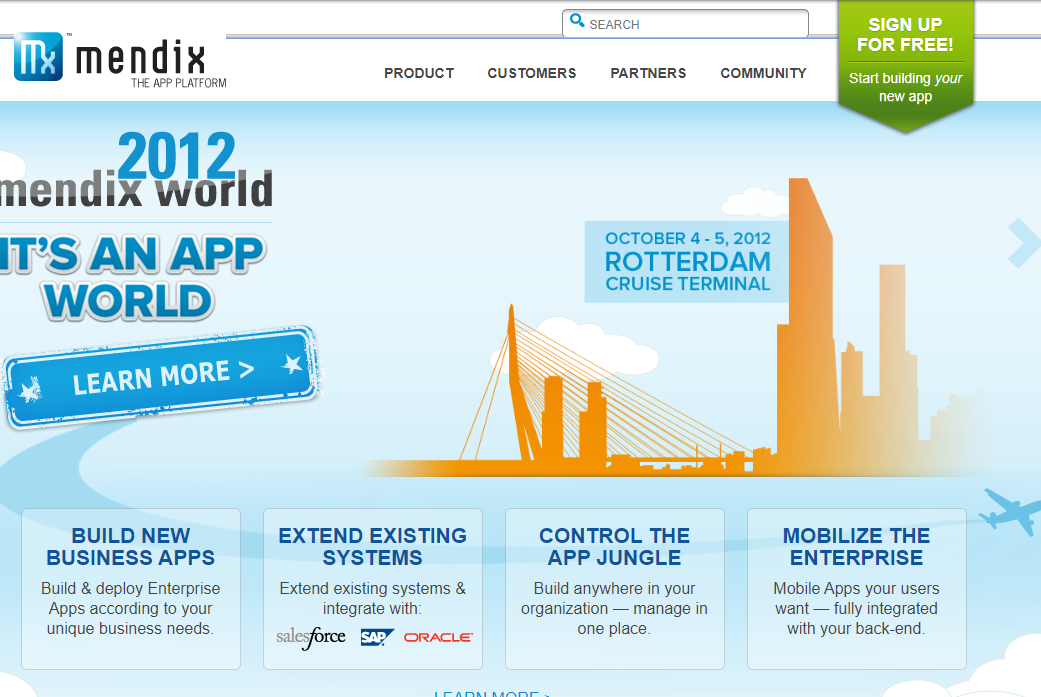
Mendix 5: The universe where Windows Phone still existed
Mendix World 2012 is where Mendix 5 was officially announced, with the following highlights:
- Layouts, with bootstrap as its main CSS framework
- Multi-tenant platform services, like multi-app deployments
- App Launchpad for users
- New enterprise administration
Now I was still very much in my training, so not everything made sense to me. Mendix 5 is where things like layouts specifically for your phone were introduced, can you imagine that?
One killer feature in Mendix 5 that everyone liked? Fast reloading of your application if you only had front-end changes! Hours of waiting saved!
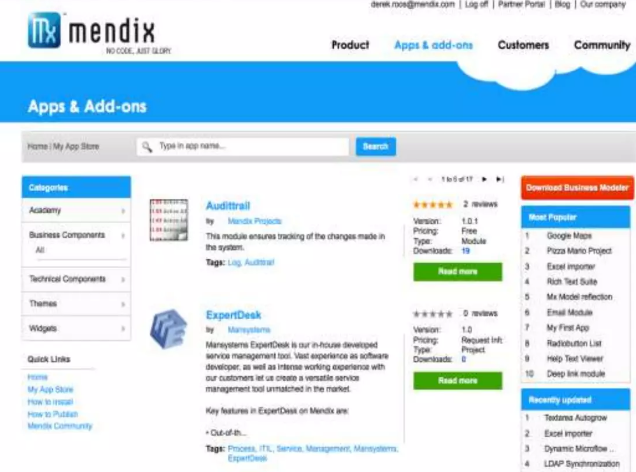
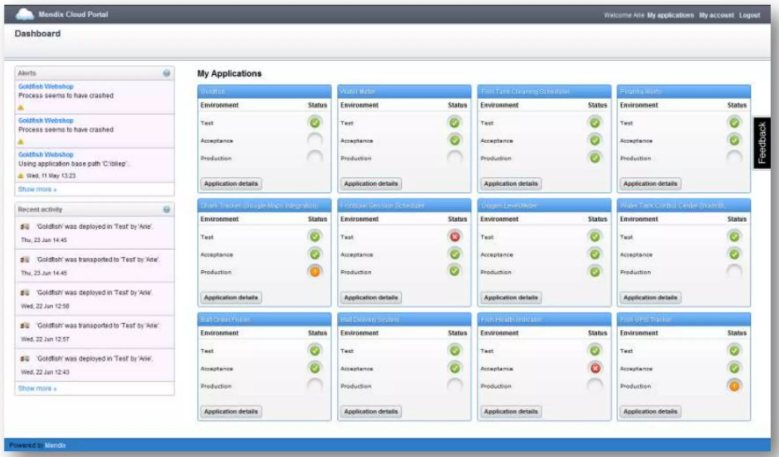
Mendix App Store and Mendix Cloud Portal: this was where the magic happened!
The next couple of years
Fast forward a couple of years to April 2014, the next installment of Mendix World, where Derek Roos announced the Mendix Community Edition; what we now know as the ‘Sandbox’ environment; a free cloud node to deploy your application.
2015 saw the Mendix DX release, or Digital Experience. It was a release focused on raising the bar. And it did. It featured for the first time a Responsive UI Framework, OData support, a new developer site and more. All released in Mendix Business Modeler 5.18.0 in August 2015.
Mendix 6: Even more features to build business critical enterprise apps
Not much later, Mendix 6 was announced to be released in that same year (Mendix 6.0 released in November 2015!) Mendix 6 boasted some great changes. Albeit in beta releases, Mendix 6 contained:
- Deployment capabilities for Cloud Foundry
- Offline Mobile Support (!)
- And the introduction of the Model API and Platform SDK
Mendix World 2016 Hackathon: WINNER!!
Development never stopped. Personally, but also the Mendix Modeler kept evolving. It was a special year as that year I joined TimeSeries as one of the first Mendix Consultants in the company.
In June 2016, we participated in the Mendix World Hackathon as a fairly unknown Mendix Partner. With little to no sleep and a lot of going back and forth, our Mendix + IoT solution won!
We left some big names as Capgemini and FlowFabric behind. I’m still immensely proud of this achievement, and the trophy still has a prominent place in my home office.
If you’re interested, the video of our winning solution can still be found on YouTube, right here.
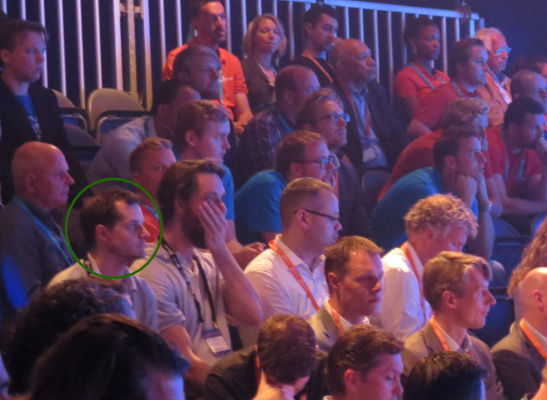
Mendix 7, finally we can REST
In 2016, Mendix announced Mendix 7. Mendix 7 coined the term ‘ Smart Apps ‘. Applications were to be Intelligent, Proactive and Contextual. Besides that, Mendix 7 came with Native REST functionality, which meant we no longer had to make use of the REST Java AppStore module.
The Mendix Web Modeler was also announced with Mendix 7, together with the first Native Mobile Experience, that allowed for syncing data and better integration with your mobile device. The Web Modeler was a seperate Development Environment in your browser. It had limited functionality compared to the installed version, but that was the entire point. The idea behind the Web Modeler was that everyone would be able to start an app, and not be confused by the possibilities that the installed version had; it had more guidance and a different UX, that helped new people get acquainted with the possibilities of the platform.
And another important state-ment
One of the big changes of Mendix 7 was the switch to a stateless runtime. The state of objects moved from the database to the client. Because of this environments could now be scaled horizontally as well!
Not saying Mendix dialed down a bit by then, not at all, but it changed. Major releases were spread out a bit more. Mendix 7 got two years of improvements and patch versions. The latest Mendix 7 version was 7.23.35(!) before it lost its support when Mendix 10 launched earlier this year. That was Mendix’ new philosophy. Monthly releases, with not only big new features, but also some developer delights that made the lives of us developers easier.
Mendix 8: Even more tools to create your seamless mobile experience
And what comes after seven? Mendix 8 launched on August 1st 2019, with its core feature being ‘True Native Mobile’ together with the Make it Native app as a companion app to build your best native application.
Other topics in Mendix 8 were:
- JavaScript actions
- Pluggable widgets
- AI bots in Studio Pro
And, of course, much more. My own time developing in Mendix 8 was minimal. Most of my projects were in Mendix 7, skipped Mendix 8 and moved over to the next version on our list:
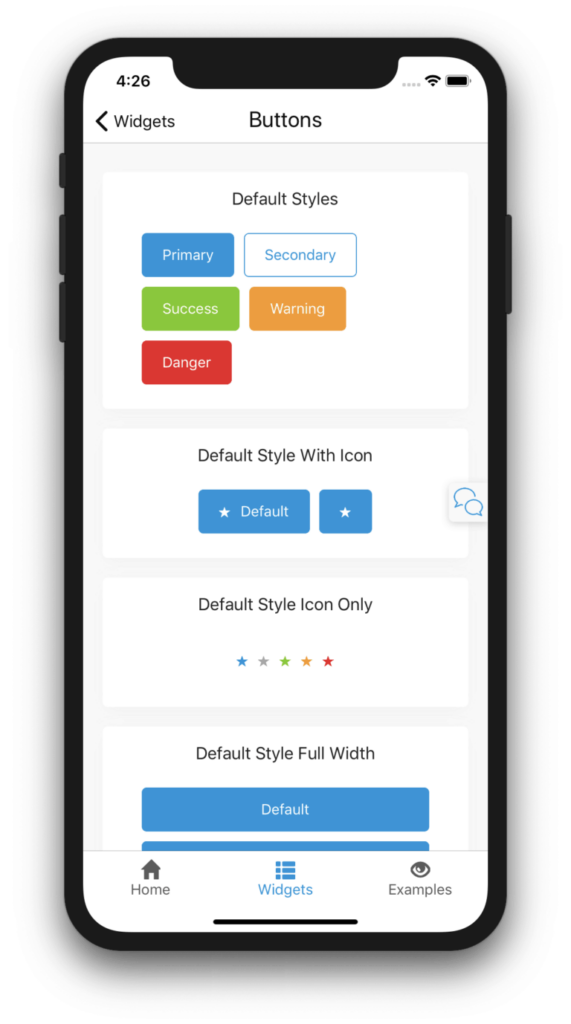
Mendix 9: Streamlining work and tasks
March 2021 saw the release of Mendix 9 with some major additions like Mendix Workflow, the Task Queue as a replacement for the Process Queue module from the marketplace and Progressive Web Apps.
I think many of us see Mendix 9 as a very stable release and it’s an absolute joy to create apps with. Many customers are still on this version of Mendix.
The latest iteration
At the end of June 2023, Mendix announced Mendix 10 which consisted of the following main themes:
- Continuous Collaboration
- Developer Experience
- Composability
- Multi-Cloud deployment
- Governance and Control
Mendix 10.0 immediately released with a bunch of impressive features like a new PDF Document Generation module (yay!), a new look and feel, a Machine Learning (ML) Kit, and more!
This next installment in Mendix looks to be very futureproof with tons of new and exciting features that enables developers to build even better apps for their customers.
I also did a fun writeup of all the exciting features of Mendix 10 in my blog ‘The Big Five of Mendix 10: Our top five features’, which is another short but fun read. You can read it here: LINK.

Conclusion
Looking back at all these releases makes you wonder how we ever developed applications without features we are now so used to. Can you imagine working on a project without Teamserver support (Mendix 3)?! I guess a lot of people will also remember the time where we used tables to create layouts of our pages (then called ‘Forms’). It’s safe to say Mendix has evolved quite a bit in the last decade.
As of writing, Mendix 10 is in full development, and sees monthly releases with new additions and improvements. I can’t wait to see what the future holds and what game-changer features get added to the platform!
About the Author

Paul Ketelaars is a Mendix Expert Developer and Mendix Architect at The Orange Force. You might recognize him as one of the first Mendix MVPs, or as the co-host of the renowned A Matter of Life and Dev video series. Besides Mendix, Paul is an avid gamer (Xbox, PlayStation, PC, Switch, you name it, he has it) and home automation enthusiast, monitoring every kWh that enters, and leaves, his house.


